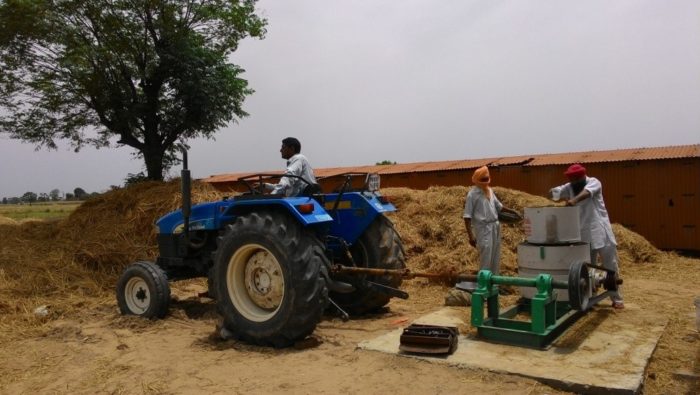7th June 2016 New Delhi, India
UK-Punjab research helping produce green fuel from rice waste

I recently visited Punjab Agricultural University (PAU), which is India’s second oldest agricultural university, and saw how a partnership with a UK university is helping converting rice crop wastage into a sustainable energy source.
Rice is widely grown crop in India and on harvest it leaves behind a substantial amount of straw in the field. Some estimates suggest 23% of rice straw produced is surplus and is either left in the field or burnt. So this contributes to green-house gas emissions too! So when I met with the University’s Vice Chancellor, Dr D.S. Dhillon, we discussed existing PAU projects with UK collaborators including its collaborations with Aston University.
In November 2015 Aston University and PAU signed an agreement to develop ‘effective, sustainable waste management methods” and eradicated the problem of open field burning in India. The issue of crop burning also has a health and societal impact due to the smoke and fumes produced. Dr Dhillon mentioned how new technology was being used on left-over rice straw to generate gas and bio-char. Gas can provide a cost-effective, sustainable form of decentralised power generation to address the local needs of heat and energy whilst bio-char could be used to make fertiliser. So ‘waste straw now has a value’.

Dr Dhillon expressed the significant benefits of collaborating with UK partners on such a complex societal issue and the difference it could make to rural communities in India. What was really rewarding was to see the technology in action. Later on in the day we visited the fields within the PAU campus to see the rice pellitiser, which processes the left over rice straw. This is the first step in converting the rice straw into a product that could easily be transported to a set-up where through pyrolysis technology as developed by the Aston University, the residue will be converted into gas and biochar.
Dr Dhillon then briefed us on PAU’s wider research portfolio particularly in soil science and plant breeding. Some key priorities for PAU included sustainable and efficient use of natural resources as inputs, use of nanotechnology and biotechnology in enhancing crop yield, agro processing and impact of climate change on agriculture.
The UK is already covering some of these areas. For example we have funded projects on nitrogen use efficiency in agriculture and developing disease and drought resistant crops. Researchers from PAU are partnering with UK under both these initiatives. Under Newton-Bhabha – our £50m joint programme with India – is funding call on Agri-Food. The UK Research Councils and India’s Department of Biotechnology plan to invest £10 million on developing joint industrial R&D projects. This joint call proposes to tackle key challenges existing at the post-harvest stage in India’s agri-food sector. So there’s lots going on!
I had enough time to visit another key institute in the PAU specialising in veterinary sciences. The Guru Angad Dev Veterinary and Animal Science University (GADVASU) is a relatively new institute having been upgraded in 2006 from the College of Veterinary Sciences. We met with its faculty and discussed drug resistance in animals along with issues like pesticide residues in food products of animal origin. There’s already an example of joint working through the GADVASU-UK Royal Veterinary College project on controlling bovine brucellosis in endemic areas.
My visits to PAU and GADVASU gave me good examples of UK-India research and innovation collaborations. This day spent in Ludhiana was indeed a day well spent!
This article is essentially useless. Tells nothing of the pyrolysis process, nothing of the machinery or rice straw product required in the making of pellets, nor of cooling them down.
Thank you for your interest in the process as developed by the Aston University. You could get more details of this technology by visiting the University’s project site http://www.aston.ac.uk/eas/research/groups/ebri/projects/energy-harvest/ as well as contacting the project implementers.
Please give the name of contact person of PAU for this project.